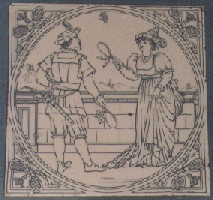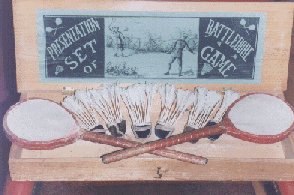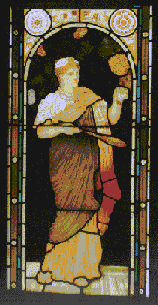Club Rules
- All club members shall be 19 years of age or over.
- Club membership fees will be determined annually by the club Executive.
- Membership limitations will be established each year by the club Executive.
- Club members may bring guests who will be required to pay a guest fee to cover shuttle costs. Guest fees will be established by the club Executive. Members are requested not to bring the same guest more than three times during a season. Guests are not encouraged if the club membership is closed.
- Proper gym shoes (non-marking soles) only are allowed on the playing surface.
- Members are requested to wear appropriate badminton attire (sport short or skirt, tracksuit, exercise pant, t-shirt or collared sport shirt, sleeveless shirt). Tank tops are not considered appropriate attire and no hats are to be worn. No perfume or cologne due to allergies and scent sensitivities.
- On regular club nights, a Board System will be used to determine games. ALL MEMBERS AND GUESTS are requested to adhere strictly to the rules of the board. Court usage will be determined by the executive and will be adjusted as necessary, i.e. Number of singles courts available.
- “Challenge” matches (for colour coding purposes) do not take precedence over regular games on club nights.
- Upon a challenge request, incumbents, who have been in a challenge during that night, are exempt from challenges for that night and the next night; Successful challengers are exempt from challenges for 1 month after achieving his/her new colour.
- Members and guests are personally liable for any damage which they do to the playing surface or any other school property. Please help to leave the school as we found it.
- All members and guests play at their own risk.
- No smoking in or on school property.
- Any member who exhibits behaviour that would be deemed inappropriate and/or jeopardize the use of club facilities, will be asked to leave the club, by the executive, without a refund of registration fees.
Colour Codes & Challenges
The Colour System
Colour |
Playing Level |
|
WHITE |
Guests |
|
BLACK |
Beginners |
|
GREEN |
Intermediate |
|
BLUE |
Intermediate/Advanced |
|
RED |
Advanced |
- The purpose of the colouring system is to facilitate more balanced and competitive games during club nights.
- The colours should represent a player’s current abilities rather than his/her potential.
- The colours hold no prestige and should NOT be used as a status symbol.
- New members start at the BLACK colour-code.
- Guests should indicate their estimated playing level to an executive who will indicate estimated colour-code on a guest (white) tag in writing.
- The executive has the ability to place any member (including new members) that are in the black colour into a higher level as required to ensure competitive games and opportunities for growth.
The Board System
- When picking a game, a member must select all of his choices from the top 10 eligible names on the Board.
- Players colour-coded as Black may pick from anyone who is Black or Green. Greens may pick from Blacks, Greens and Blues. Blues and Reds may pick from anyone.
- When a name reaches the top of the Board, it is that members turn to pick.
The Challenge System
Members are encouraged to challenge as often and frequently as permitted under our rules. This will better ensure that a member’s current abilities are best reflected in their current colour-code. The challenge rules are as follows.
- Challenges must be acknowledged and tracked by an executive member.
- Challenges must be start their first game before 8pm.
- Challenges shall not occur in the first 4 weeks of the season.
- Each member may challenge into GREEN/BLUE/RED two times per season.
- Incumbents are eligible players who are chosen to participate in a challenge match.
- A player is considered eligible if he/she attends the given session with the intention of playing and his/her colour-code is the one being challenged into.
- Incumbents are chosen at random from eligible players. Eligible players who choose not to participate in a challenge will have their colour-code changed to one level lower via the Knock-down rule (below). Incumbents who have already participated in a challenge match may decline subsequent challenge matches on the same night, without penalty. An incumbent may not be challenged within one month of advancing to a new colour.
- Successfully challenging in Singles games:
- Over a one-month period, the challenger wins two out of three singles games against distinct, willing incumbents.
- Incumbents may decline singles-challenges without penalty.
- Successfully challenging in Doubles games:
- In one evening, in combination with three incumbents, the challenger must win two out of three doubles games, each game partnering with one of the incumbents against the other two incumbents.
- An incumbent who loses all 3 challenge games will have his/her colour-code changed to one level lower via the Knock-down rule (below). Note that is can only happen if the challenger is successful.
- Knock-down rule:
- A member is bumped one colour-level down (Red->Blue, Blue → Green, Green → Black)
- Black-coded players cannot be challenged and therefore, cannot be Knocked-down
Bylaws
- All decisions made by the Club Executive require a 51% majority vote of the total executive.
- Signing of Club Documents: The President or the Secretary will be authorized to sign documents on behalf of the Club. (E.g.. Contracts for the use of the School Facilities, etc.).
- Signing of Cheques: The Treasurer will be authorized to sign all cheques for the Club. The President will also have signing authority, for emergency use only.
- An Annual General Meeting will be held each year during the month of April. At the Annual General Meeting the Executive for the next badminton season will be elected.
- Only paid-up members of the Club will be allowed to vote at an Annual General Meeting or Special General Meeting
- In the event that a Special General Meeting of the membership is required, all members must receive seven (7) working days prior notice of the Meeting, in writing. A Special General Meeting may be called by the Executive or requested by a minimum ten (10) Club Members.
Constitution
The club shall be known as the Cambridge Badminton Club, which consists of the Adult Cambridge Badminton Club and the Junior Cambridge Badminton Club.
- The objectives of the club shall be:
- To promote the sport of Badminton
- To develop an outlet for athletic and social events
- To contribute to the development of the community
- The club shall be governed by an elected Executive body of (9) members comprising:
President Past President (Optional)
Vice President Secretary
Treasurer Four (4) or Five (5) Directors - The length of term of the Elected Executive shall be one (1) year.
- The Executive shall be elected at the Annual General Meeting.
- All members shall receive fourteen (14) days prior notice of the Annual General Meeting, at which time they will be requested to submit nominations for the new Executive.
- The elected Executive shall have the power to form subcommittees within the club, as required, to assist with running the club.
The Adult club shall be open to all adults, 19 years of age and over, within membership limitations as determined annually by the Executive. The Junior club shall be open to all children between the ages of 7 and 18, within membership limitations, as determined annually by the Executive. The Junior & Adult club will be known as two (2) separate entities financially.
- The Adult club shall be open to all adults, 19 years of age and over, within membership limitations as determined annually by the Executive. The Junior club shall be open to all children between the ages of 7 and 18, within membership limitations, as determined annually by the Executive. The Junior & Adult club will be known as two (2) separate entities financially.
-
In order to make any amendment to the Constitution, all club members must receive written notice of the proposed amendment (14) days prior to the Annual General Meeting.
Any changes must be approved by a two-thirds majority of those present at the meeting or represented by proxy.
April 10, 1978
Points 1 & 4 revised March 2004
Point 3 revised Oct 2015
History
Battledore and Shuttlecock

Battledore and shuttlecock is a game which probably developed in Ancient Greece around 2000 years ago. From there is apparently spread East to China, Japan, India and Siam. Peasants played it in medieval England and by the late 16th century, it had become a popular children’s game. In the 17th century, Battledore or Jeu de Volant was an upper class pastime in many European countries. Battledore and Shuttlecock was simply two people hitting a shuttlecock backwards and forwards with a simple bat as many times as they could without allowing it to hit the ground. In 1830, the record for the number of hits was made by the Somerset family and was apparently 2117 hits.
The origin of the shuttlecock is unclear although one theory has it that corks were used to store feathers for some reason (writing feathers perhaps) in the past and the resulting object became a popular thing for first throwing and then batting.
The name ‘badminton’ comes from Badminton House, the Duke of Beaufort’s residence in Gloucestershire (now Avon) where a new version of battledore had emerged by the end of the 1850’s. (Isaac Spratt, a London toy dealer published a booklet, “Badminton Battledore – a new game,” in 1860, but unfortunately no copy has survived.). When Battledore became Badminton isn’t known exactly but the first rules of the game were written in Poona, India by the British in 1873 and these were not dissimilar to the modern game. The game (which was sometimes known as ‘hit and scream’) was very popular there as well as in England during the 1870’s and 1880’s but more as a social outdoor pastime rather than a sport.
In 1883 in a slim volume entitled, “Lawn Tennis, Croquet, Racquets, etc.” was published which included ten pages on Badminton which the author described as “Lawn tennis played with shuttlecocks instead of balls.” People returning from India to England began to give the game more credibility and, as people started to take it more seriously, in 1893, the first meeting of various clubs was convened at Southsea in Hampshire in 1893. Soon after the Badminton Association was consequently founded by and 14 foremost clubs in England agreed on a uniform set of rules. In March 1898, the first Open Tournament was held at Guildford the first ‘All England’ Championships were held the following year.

Denmark, the USA and Canada became ardent followers of the game during the 1930s and in 1934, The International Badminton Federation was created, members initially being including England, Wales, Ireland, Scotland, Denmark, Holland, Canada, New Zealand and France, with India joining as an affiliate in 1936. The game was also becoming popular in Malaysia, Indonesia and Australia. The first fully professional open badminton tournament was played at Albert Hall in London in 1979. Badminton was admitted as a full medal sport at the games of the XXVth Olympiad in Barcelona in 1992.

This dramatic piece is one of the most important finds of fine art in the racket sports genre. Done in the aesthetic style of the pre-Raphaelite Brotherhood in 1872, the panel is one of two works based on the original oil paintings by Albert Moore in 1871. This panel, entitled “Battledore”, is the only existing companion to the “Shuttlecock” panel now featured at the prestigious Wimbledon Lawn Tennis Museum. 4 1/2 feet tall in heavy wood frame
Compliments of John Duggan, 2001.
